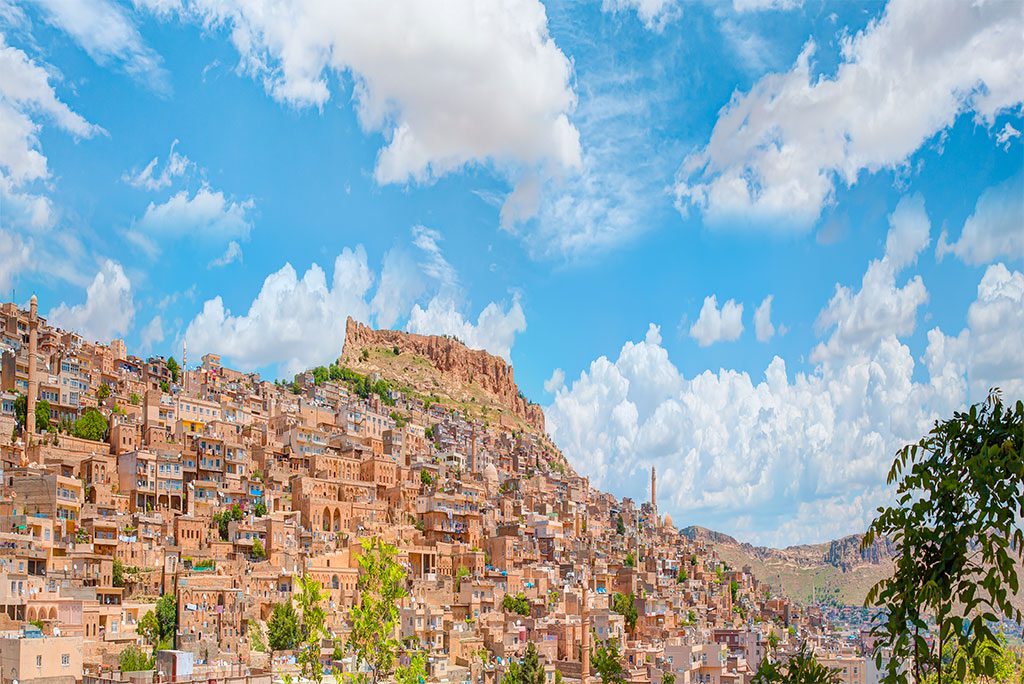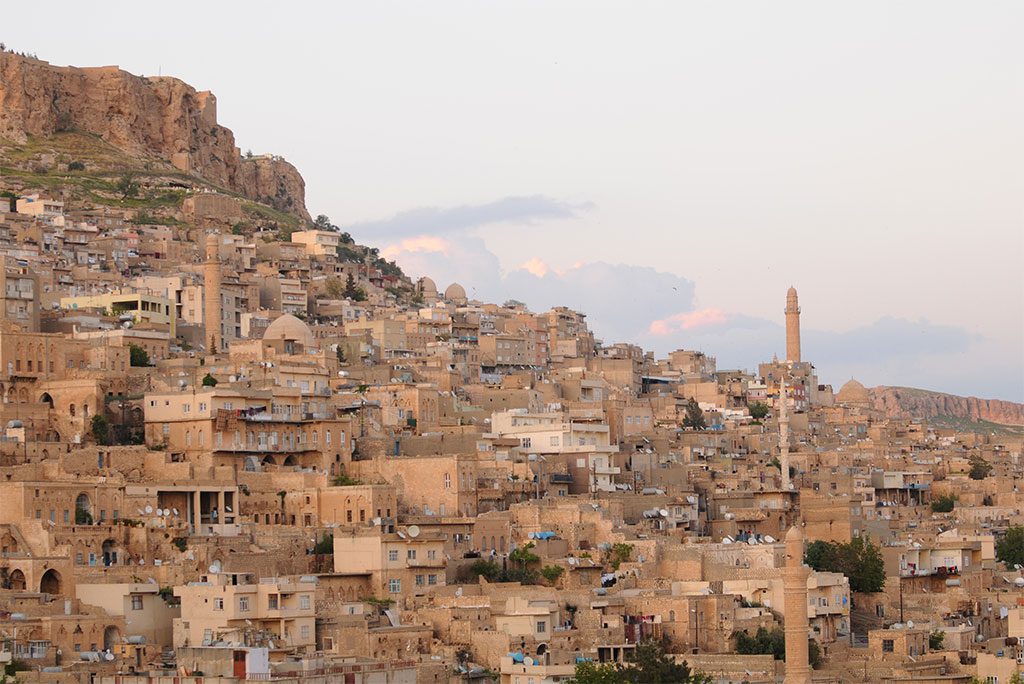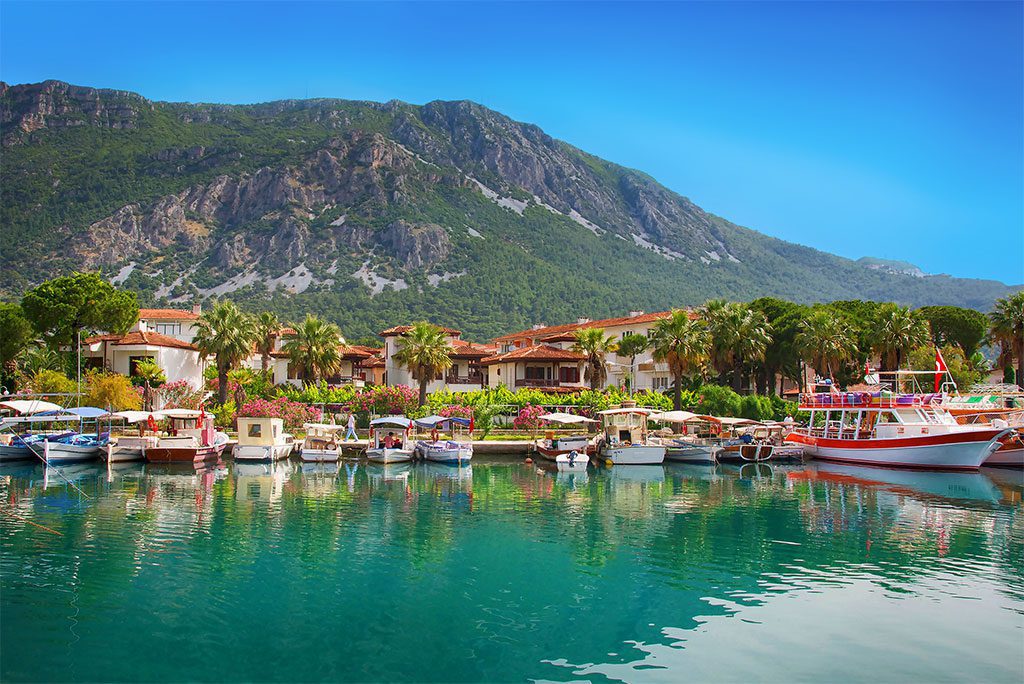Turkey, straddling both Europe and Asia, has been a crossroads for travellers for millennia due to its rich history and diverse environment. Having been a hub for commerce and cultural exchange, Turkey now has a population that reflects this complex tapestry of influences. Located at the crossroads of East and West, the country’s rich cultural heritage and diverse influences are reflected in its diverse and delectable cuisine as well as in its many religious buildings and ancient sites.
There are many wonderful places to visit besides Istanbul, the former capital of the Byzantine and Ottoman Empires. Cappadocia, with its cave hotels and hot air balloon rides over the surreal terrain; Ephesus, with its ruins from the Greco-Roman era; and the Aegean coast, with its opulent beach resorts, all offer unique vacation experiences. The top tourist destinations in Turkey are as follows.
10. Ankara

Ankara, the Turkish capital, is a large metropolis where many governmental and commercial institutions, as well as educational institutions and diplomatic missions, may be found side by side. Ankara is a significant transportation hub, connecting locals and visitors to other major cities in Turkey and the surrounding Anatolia area. Ankara is mostly a corporate hub, but it also has a vibrant cultural scene. A few historic landmarks and cultural activities may be found in this busy metropolis.
With a history that spans the Hittite, Greek, Roman, Byzantine, and Ottoman empires, Ankara is a city whose architecture and ruins reflect that rich tapestry. The Citadel, a Roman theatre, and the Temple of Augustus are among the city’s most famous landmarks. You may visit one of the many old mosques across the city. In Anitkabir, a mausoleum built in the 20th century, lies the grave of Turkey’s first President, Mustafa Kemal Atatürk.
The Museum of Anatolian Civilizations, which includes more than 200,000 artifacts, is only one example of the city’s thriving cultural landscape. Fresh food, spices, rugs, and gadgets may all be found at a variety of stores in both older markets and newer retail centres.
9. Mardin
The capital of Turkey’s Mardin Province, Mardin sits on a hill overlooking the plains of Mesopotamia in the country’s southeastern corner. Mardin is one of the oldest cities in the area, and its Old City, with its winding sandstone streets, is a major tourist attraction.
The historic district of Mardin is quite walkable. The Deyrü’z-Zafaran Monastery, one of the world’s oldest monasteries, and the Sultan Isa Medresesi, a mediaeval structure that previously functioned as an astronomical observatory, are two of the most prominent attractions along the winding lanes. Gorgeous gardens and artwork decorate the grounds of the Islamic school known as Zinciriye Medresesi, which dates back to the 14th century.
Due to its towering minaret, the Great Mosque cannot be missed. The citadel offers great photo ops, but is unfortunately off-limits to the public. There are a plethora of stores offering traditional goods, including ceramics, silverware, leather, and headdresses, spread out around the Old City.
8. Konya

Konya, a major city in Turkey’s Central Anatolia Region, is one of the oldest towns in the world and is famous for its Seljuk architecture and whirling dervishes. Under the Seljuk Dynasty that ruled through the 12th and 13th centuries, the city of Konya flourished. The Alaeddin Mosque, which contains the graves of various sultans, is only one example of the beautiful architecture dating back to that time period that may still be seen today. A second well-known mosque is the Ince Minare Medrese, which has been converted into a museum housing items from the Seljuk and Ottoman periods.
The Seljuk Palace is equally interesting to see, despite being in ruins. The Seljuk Tower is one of Turkey’s highest buildings and a popular tourist destination because of its rotating restaurant on the building’s uppermost two stories.
Rumi, a Persian mystic and Sufi scholar, was born in the city of Konya about the year 1300. The Mausoleum of Rumi and the adjoining Melvana Museum are two of Konya’s most popular tourist attractions. The Mevlevi Order was created by Rumi’s disciples; it is better known by its other name, “Whistling Dervishes,” because of its members’ penchant for performing religious events characterised by rapid left-foot spinning in white, flowing robes. At the Mevlana Cultural Center, you may see these rituals every week.
Alaeddin Hill, in the heart of the city, and the Japanese Park, with its stunning pagodas, waterfalls, and ponds, are just two of the many parks and green areas available in Konya.
A lack of pubs and nightclubs may be attributed to Konya’s status as one of the more conservative cities in Turkey. However, alcoholic beverages may be purchased at several hotels and cafés.
7. Antalya
Antalya is a huge and bustling city on the Mediterranean coast of Turkey, home to many hotels, restaurants, and other tourist amenities. Beautiful beaches and verdant hillsides with scattered ancient ruins provide a dramatic backdrop for the city. There is something for everyone to do in Antalya, from swimming and sailing to hiking and sight-seeing.
Kaleiçi, the Old Quarter is a great place to get a feel for the city’s history; it has the city walls, Roman gates, winding lanes, and many antique buildings, including the Clock Tower and stunning mosques, churches, and temples. At the centre of the Old Quarter lies Cumhuriyet Square, surrounded by shops, cafés, Turkish baths and street performers.
Konyaalti and Lara are two of Antalya’s most popular beaches, and both have white sands, water sports, resorts, and a wide variety of dining and nightlife options. There are water parks, amusement parks, and a zoo in close proximity to the beaches. Several museums, like the highly regarded Antalya Museum, provide displays of local antiques and relics.
6. Marmaris
Marmaris, a prominent Turkish vacation town, is known for its picturesque scenery of pine-covered mountains, white sand beaches, turquoise ocean, and ancient buildings. This beautiful cruise port can be found along the Turkish Riviera in southwestern Turkey, and it is a tourist’s dream because of its abundance of amazing attractions, water sports, delicious cuisine, and lively nightlife.
Visitors to Marmaris will be spoilt for choice due to the abundance of attractions. The Castle of Suleyman the Magnificent, built in the 16th century, and other historic buildings may be seen during a stroll through the old district’s cobblestone streets. In order to see the lovely bays and adjacent towns, tourists may join one of many boat cruises.
Jeep safaris provide off-the-beaten-path excursions, while horseback riding tours canter through thick pine woods, orange orchards, mediaeval towns, and around pristine beaches and breathtaking waterfalls.
Water parks for the entire family and traditional Turkish spas for complete relaxation may be found in Marmaris. And if that’s not enough, you can take a day excursion from Marmaris to some of the world’s most famous tourist spots, including Dalyan, Ephesus, Pamukkale, and Cleopatra Island.
There is some of the best nightlife in all of Turkey in Marmaris. Fast food joints sit beside five-star establishments, and vice versa. The city and its beaches are teeming with bars and nightclubs. Turkish Night Shows are not to be missed, since they offer authentic Turkish cuisine, mezes, and belly dancing.
5. Side
Side was a major port in ancient Pamphylia, and Alexander the Great lived there in the 4th century BC. Today, it is a beautiful town with ancient ruins and modern resorts that look out over white sand beaches. Located on a peninsula in the Antalya Province on the Mediterranean coast of Turkey, Side is a great place to go sightseeing, party, and explore the great outdoors.
An excavated complex of ancient Hellenistic and Roman remains, including a gigantic amphitheatre, agora, Byzantine church, public baths, marble columns, and several temples, is Side’s main draw. The Roman baths have been renovated into a museum where a variety of ancient sculptures and relics may be seen by visitors. The sunset is a particularly beautiful time to see the Temple of Apollo, which is located on a cliff above the shore.
Side is a picturesque town with winding alleys and beautiful parks, and it also has a wide selection of restaurants serving anything from fast food to fine dining. The Manavgat River is a great place to go on a boat excursion, do white-water rafting, or just check out some stunning waterfalls.
4. Bodrum

Bodrum, in Turkey’s Mugla Province on the southern Aegean, is where the ancient city of Halicarnassus—famous for its marble architecture, temples, statues, paved streets, and the Mausoleum—was defended.
The city fell into ruin and remained a sleepy fishing town until Turkish intellectuals revived it in the 20th century with their literature. People from all over the globe visit Bodrum each year to enjoy the city’s beautiful beaches, cliffside resorts, and historic ruins.
To the east of Bodrum, visitors will discover a stunning beach with a clear blue sea. There are several restaurants, pubs, and nightclubs in the area. The marina, major commercial areas, and best restaurants are all on the western side of town.
It would be a shame to miss the Castle of St. Peter, or Bodrum Castle, during a trip to Bodrum. The Knights Hospitaller started construction in 1402, and the building has been a museum ever since. The Myndos Gate, where a fierce fight took place while the city was under siege by Alexander the Great, is another point of interest.
Bodrum is known for its historical windmills, Turkish saunas and mud baths, windsurfing, scuba diving, and boat trips that incorporate nightclubs and glass-bottomed dance floors, as well as its award-winning Bodrum Museum of Underwater Archaeology, which is situated in Bodrum Castle.
3. Ephesus

Ephesus, in Aegean Turkey, is the best preserved classical city in Europe. One of the greatest towns in the Roman Empire by the 1st century BC, Ephesus was also home to the Temple of Artemis, one of the Seven Wonders of the Ancient World. Ephesus is one of the most visited sites in Turkey because of its well-preserved remains, which are located inside a huge archaeological complex.
Although Ephesus became a Roman colony in 133 BC, its heyday wasn’t until some 200 years later. During its time as the Roman province capital of Asia Minor, Ephesus was home to around 250,000 people. While at Ephesus, St. Paul worked to spread Christianity and other faiths. Ephesus’s collapse started in the third century, when the city’s port began to deteriorate and it was sacked by the Germanic Goths.
Nearly 1500 years passed during which Ephesus was mostly forgotten. A multinational group of archaeologists first started uncovering the remains of this spectacular ancient metropolis in the 1860s. Even though only around 20% of Ephesus has been explored so far, it is still one of the world’s biggest open-air archaeological sites.
The Temple of Artemis is without a doubt Ephesus’s most well-known landmark. This temple, once the biggest in the world, attests to Ephesus’s prominence in antiquity. The temple was mostly destroyed in the fifth century, but its remnants are still open to the public.
The Terraced Houses are among the newest and most talked-about excavations in Ephesus. Built in a contemporary Roman style, these mansions housed Ephesus’ wealthiest citizens from about the year 100.
Some of the mansions, remarkably, included heating systems, marble flooring, and both hot and cold showers. Unique paintings, mosaics, and handwritten love poetry adorn the walls.
Visiting Ephesus without stopping at the legendary Library of Celsus would be a waste of time. The library, which was constructed in 123 AD, was once the third greatest in antiquity, after the libraries in Alexandria and Pergamum. Since its restoration, the library’s two-story layout, columns, and capitals are much more visible.
The four sculptures representing the four virtues should be admired. Sophia, representing wisdom, Episteme, representing knowledge, Ennoia, representing thinking, and Arete, representing kindness, are all shown, although in replica form rather than the originals.
Selçuk, located just three kilometres from Ephesus, is a popular place to stay for tourists before or after seeing the ancient city. You may learn more about the region’s archaeology by visiting the Museum of Ephesus, or you can stop in the middle of Selçuk to see the Roman aqueduct that formerly provided the city’s water. The most popular memento from this region is a double-knot carpet, which you may purchase while perusing the market.
2. Cappadocia
Cappadocia, a region in central Turkey’s Anatolia region, is famous for its surreal scenery of weird rock formations, including chimneys, cones, mushrooms, and pinnacles. Some of these peculiar structures, which can be as high as 130 feet (40 metres), were shaped over time by natural processes, including previous volcanic eruptions and weathering. But thousands of years ago, people added amazing embellishments to the scenery by carving out homes, churches, and subterranean cities from the soft rock.
As early as 1800 BC, the area was occupied by the Hittites, who, in response to invasions by the Persians and Greeks, carved out elaborate tunnel systems underneath the city. Christianity arrived in Cappadocia much later, in the 4th century AD, when Christians fled religious persecution in Rome and sought shelter in the region’s underground tunnels and caverns. The area is becoming a renowned tourist destination because of its abundance of natural attractions and historical landmarks.
Nevsehir province is home to most of Cappadocia, although the cities of Ürgüp, Göreme, Avanos, Ortahisar, and Mustafapasa are also important. Hotels, restaurants, nightlife, and attractions, including museums, rock castles, fairy chimneys, underground tunnels, ancient Greek villages, monasteries, and handcraft markets, can be found in many of these cities. Travelers may spend the night in one of many caves in the area.
1. Istanbul
Formerly the capital of the Ottoman and Byzantine Empires, Istanbul is now Turkey’s biggest metropolis and one of the world’s largest. Istanbul is the only city in the world that is located on two continents, since it spreads over the Bosphorus, a small strait that links Asia and Europe. Turkey’s largest city, Istanbul, is a popular vacation spot due to its foreign vibe, rich history, and impressive architecture.
Most of Istanbul’s famous landmarks, such as Hagia Sophia, the Blue Mosque, and Topkapi Palace, can be found in the Old City. New City is another significant area, notable for its contemporary landmarks, towers, and retail malls. While Beyoglu and Galata are known for their lively nightlife and plenty of entertainment options, the Bosphorus region is renowned for its stunning palaces, waterfront residences, and urban parks.
If you’re looking for a place with plenty of intriguing sights and activities, go no further than Istanbul. The Grand Bazaar is one of the oldest and biggest covered marketplaces in the world, and it is a shopping experience not to be missed. One of the best ways to immerse yourself in Turkish culture is to try out a traditional Turkish bath. There is a wide variety of restaurants, bars, and clubs in Istanbul’s nightlife scene to meet every visitor’s needs and preferences.
















